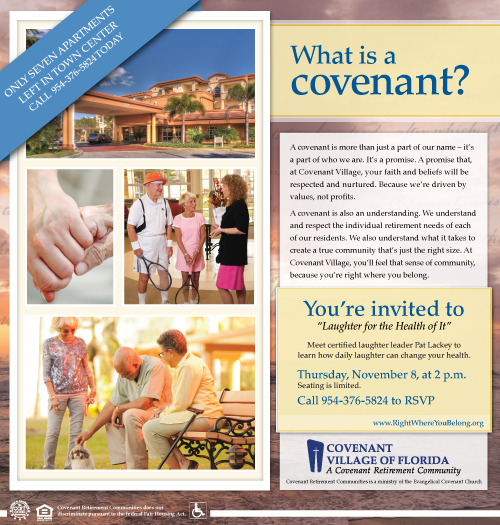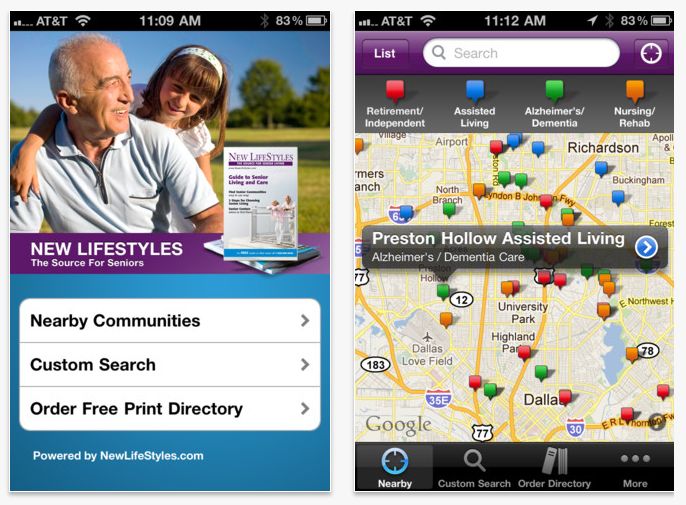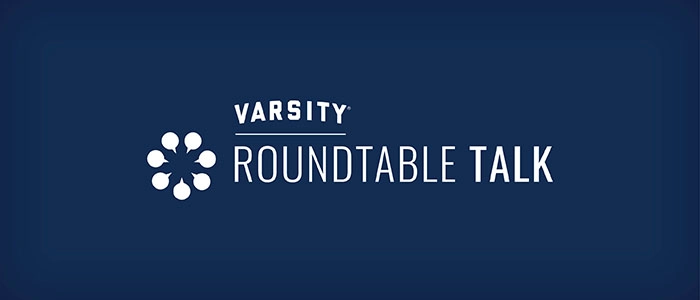As a seasoned senior living sales professional, have you fallen into the habit of giving a routine “tour” of your community that you could do in your sleep? You know — “Here’s the living room, here’s the dining room, here’s the washer/dryer; the pool is over there” — basically ticking off the features like a real estate agent and maybe throwing in a few benefits here and there. How do you avoid falling into the trap of giving a canned sales pitch that is not very effective in connecting with your prospect and that even bores you?
Persuading someone that moving to your community is the right decision requires a deeper level of communication. He or she may be thinking, “This is the last place I’m going to live.” It’s a very emotional decision, so you need to do more than just provide information. You need to get into that person’s head and learn what he or she values in life, because values guide our judgments, actions and important decisions.
Visual Clues
The process of discovering a prospect’s values can start even before he or she walks in the door of your community. Look out in the parking lot to see what the person is driving. Is the car sturdy and dependable? Is it expensive and possibly a status symbol? Is it sporty and fun? A car can speak volumes about its owner.
Once the prospect walks in, you can continue picking up subtle clues. Observe his or her appearance and dress, listen for words and phrases that reflect his or her values, and watch his or her body language. Take note of whether the person is decisive or indecisive, impulsive or cautious.
Probe to Discover Values
Pose questions that get the person talking, and really listen to the answers. Ask about his or her past or current career, interests and hobbies, family and the decision-making process. I like to ask, “What is a typical day in the life of Jane Doe like?” Or, “If you could do anything you wanted right now, what would it be?” Based on the answer, you may find out that the person is adventurous, intellectually curious, family-oriented, health conscious or a status seeker. And, even more important, are the questions he or she asks you.
Once you’ve gleaned some insights into your prospect’s values, focus on benefits that resonate with him or her, and don’t over-emphasize those that don’t. For instance, don’t go overboard selling the pool, fitness center and personal trainer to someone who doesn’t value health and fitness. He or she might be thinking, “I’m going to pay for something I’ll never use.”
Here are just a few examples of “values” portraits and ways you might connect with each. (Most people are a combination of more than one.)
HEARTH AND HOMEMAKERS
These are typically women whose career was raising their children and caring for the family home. They feel attached to the home, and leaving it and the memories created there is very emotional for them. They may feel a need to consult their children on the decision. They may also be considering a move to be closer to family.
How to connect: Highlight amenities, such as built-in shelves and wall space for family photos and mementos; a second bedroom for visiting family members to spend the night; and the private dining room for family celebrations. Tell a story that will resonate with their values: “Can you imagine hosting Thanksgiving dinner here in the private dining room, then being able to relax and enjoy coffee and dessert with your family without needing to wash a mound of pots and pans?”
FISCAL CONSERVATIVES
A large subset of the current generation of senior living prospects, they are careful shoppers who value financial security. High entrance fees may give them sticker shock, but if they see value, they will buy.
How to connect: Explain the value of the CCRC model by comparing the costs of home ownership and retirement community living (do this exercise prior to your meeting to ensure that the results are favorable for your community). For communities with a Type A Life Care agreement, share tangible comparisons of costs for skilled care with and without Life Care. Try this: “Do you know what skilled nursing care costs today? Have you ever heard stories of people who spent their life savings in a nursing home? Let me explain how Life Care might prevent that from happening to you.”
IN-CHARGE INTELLECTUALS
This group is attracted to intellectual pursuits, prestige and status. They may be leaders in their own communities, serve on a board of directors, read avidly and travel frequently. They want to maintain their independence and live life on their own terms. They do not have an emotional attachment to their homes—it’s just a place to hang their hats while pursuing their true interests.
How to connect: Mention that your community is “the leader,” “exceptional” or “the best around.” Say things like: “You can just lock the door and go, knowing that your home will be safe while you are away, and nice and clean when you return.” Perhaps see if they have an interest in serving on the resident council.
Next time you have a sales appointment, throw away that canned script, and focus on the person in front of you. Ask probing questions that will uncover his or her life values, so you can present your community in a way that connects with those values.
 Grown Up Advertising is authored by our creative director and industry veteran Stephen Gordet, and covers the do’s and don’ts of talking to the mature market.
Grown Up Advertising is authored by our creative director and industry veteran Stephen Gordet, and covers the do’s and don’ts of talking to the mature market.
 In the past year alone, we’ve seen a number of online research portals dedicated to helping find and review senior care options, and an even larger number of apps dedicated to everything from specialized caregiving to therapy plans. Now, one company is combining the best of both platforms.
In the past year alone, we’ve seen a number of online research portals dedicated to helping find and review senior care options, and an even larger number of apps dedicated to everything from specialized caregiving to therapy plans. Now, one company is combining the best of both platforms. There have been great strides to become more environmentally conscious, as we uncovered in our recent Project Looking Glass II and Next Generation studies.
There have been great strides to become more environmentally conscious, as we uncovered in our recent Project Looking Glass II and Next Generation studies. The first impressions of health information technology (HIT) – including electronic health records (
The first impressions of health information technology (HIT) – including electronic health records (